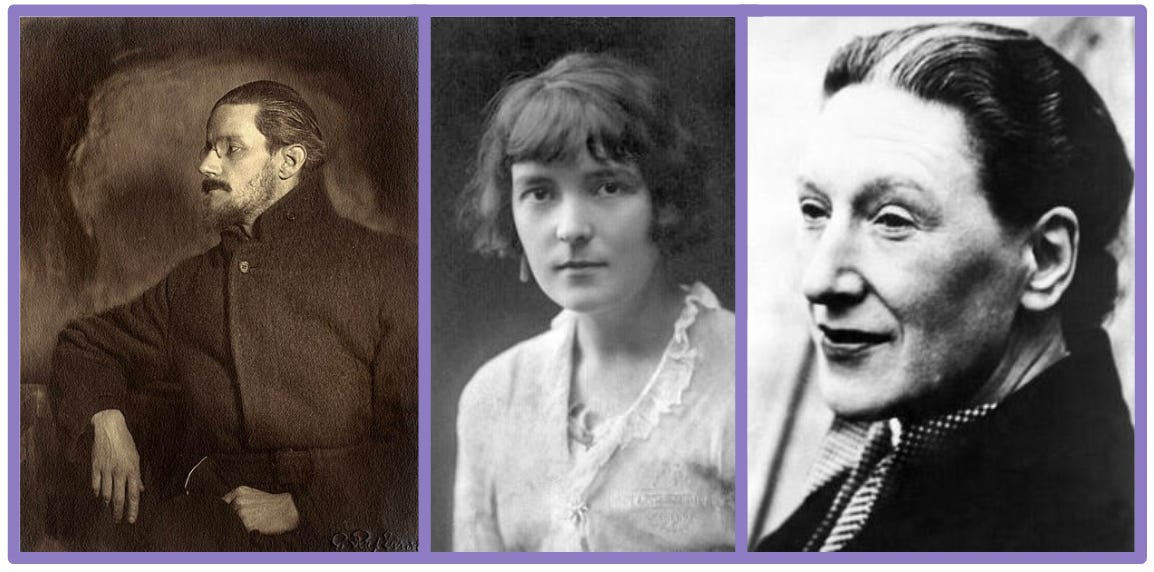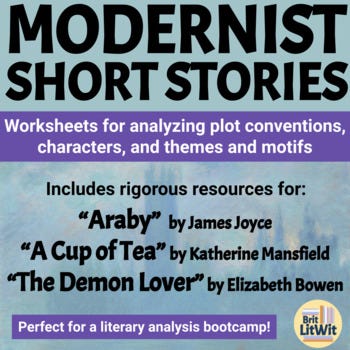When student motivation is low, teach Modernist short stories

The end of a novel unit is a great feeling: you’re no longer slogging through the reading questions and quizzes, so now students are happily working on the creative projects that will get them to express their big takeaways. Everyone enjoys the relaxed atmosphere of independent work and even the tinge of nervous energy that comes with presenting to the class—as well as the relief of getting it over with! It’s the best of times in English class, but what’s next? If you jump right into another long novel or play, students might be unfocused or even grumpy as they face what feels like more hard work right away. That’s why it’s nice to have material that serves as a palate cleanser between longer texts.
But don’t resort to activities that are barely teetering on the edge of academic! High school students know that crossword puzzles, brainteasers, or extra review games are just busywork, and they’ll either resent it or bug you about doing them all the time. Instead, you can keep things moving by teaching text like high-interest poems or short stories. During times of low student motivation, these Modernist short stories worked great for me:
“Araby” by James Joyce, which follows an emerging adolescent protagonist who gets his hopes up about a romance and a bazaar coming to Dublin
“The Demon Lover” by Elizabeth Bowen, about a woman who has flashbacks to a relationship with a soldier that occurred during World War I, while in the present day she returns to her London home damaged by The Blitz during World War II
“A Cup of Tea” by Katherine Mansfield, about a wealthy woman who tries to befriend a younger woman who approaches her on the street to ask for money
These stories from the early 20th century are the ideal texts for high school English class. First of all, they’re brief (we’re talking 4-6 pages), so you should be hearing fewer exhausted sighs from students when they see what’s ahead. Also, the language is contemporary and engaging enough for students to grasp on a surface level while they read independently. But the coolest thing is how the seemingly mundane details offer so many opportunities for deeper analysis in writing and discussion. High school students love looking for clues about what might be influencing characters’ thoughts and behavior, so in a way, these stories stealthily serve the purpose of the busywork brainteaser interlude (but in an age-appropriate way).
Modernist short stories including the ones listed above and others from the same authors/era are great to employ at other times during the school year when you know students aren’t going to be motivated to jump into a lengthy novel or play. Consider teaching them:
At the start of the year, when students are rusty after a summer off and are also apprehensive about whether your class is going to be difficult. Starting with an engaging piece that fosters low-pressure discussions can be a nice way to break the ice.
At the end of the year, when distributing another chunky novel and long packet of reading questions just isn’t going to work (especially with seniors).
When you have a weird schedule for a little while, like during standardized testing or a stretch of bad weather days that cause delays and/or closures.
You can certainly teach these stories grouped into a short unit, but they might be ore helpful to you to keep in your back pocket to present when student (and maybe teacher) energy is depleted or you have an irregular kind of week or two. Studying Modernist short stories will keep the expectations high for students without wearing down their attention.
For worksheets, extended thinking questions, and creative assignments that will make teaching Modernist short stories a breeze, check out my bundle on TpT! Resources are available for each story individually too.


